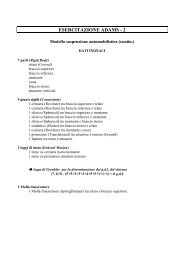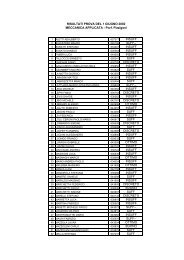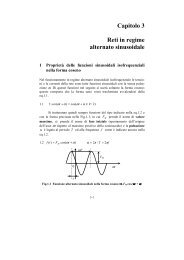Semmering Railway - Wikipedia, the free encyclopedia
Semmering Railway - Wikipedia, the free encyclopedia
Semmering Railway - Wikipedia, the free encyclopedia
Create successful ePaper yourself
Turn your PDF publications into a flip-book with our unique Google optimized e-Paper software.
Berlin Straßenbahn - <strong>Wikipedia</strong>, <strong>the</strong> <strong>free</strong> <strong>encyclopedia</strong><br />
tramway cars, and more than 14,400 employees within <strong>the</strong> tramway section. An average tramway car<br />
ran over 42,500 kilometers per year. The Berlin tramway had more than 929 million passengers in 1929.<br />
At <strong>the</strong> end of 1929, <strong>the</strong> BVG already had 93 tramway lines.<br />
In <strong>the</strong> beginning of <strong>the</strong> thirties, <strong>the</strong> Berlin tramway network began to decline. After partial closing of <strong>the</strong><br />
world's first electric tram in 1930, on 31 October 1934 <strong>the</strong> oldest tramway of Germany followed: <strong>the</strong><br />
Charlottenburger Chaussee (today Straße des 17. Juni) was rebuilt by Nazi planners to a monumental<br />
East-West-Axis, <strong>the</strong> tramway had to leave. In 1938, <strong>the</strong>re were still 71 tramway lines, 2,800 tram cars<br />
and about 12,500 employees. Consequently, <strong>the</strong> bus network was extended during this time. Since 1933,<br />
Berlin also had trolley busses.<br />
During World War II, some transport tasks were given back to <strong>the</strong> tramway to save oil. Thus an<br />
extensive transport of goods was established. Bombings (from March 1943 on) and <strong>the</strong> lack of personal<br />
and electricity caused <strong>the</strong> transport performance to decline. Due to <strong>the</strong> final fights for Berlin, <strong>the</strong><br />
tramway system collapsed on 23 April 1945.<br />
The Berlin Tramway since 1945<br />
Environment<br />
The Berlin tram network is today <strong>the</strong> largest one in Germany,<br />
and, in spite of many cutbacks, one of <strong>the</strong> largest in <strong>the</strong> world.<br />
Around Berlin <strong>the</strong>re are some additional tram companies that<br />
do not belong to <strong>the</strong> BVG:<br />
● <strong>the</strong> Potsdam Tramway,<br />
● <strong>the</strong> Strausberg <strong>Railway</strong> (which is in fact a tram line),<br />
● <strong>the</strong> Tramway Schöneiche-Rüdersdorf, and<br />
● <strong>the</strong> Woltersdorf Tramway.<br />
Motor car of type TWA2 of <strong>the</strong> BVG,<br />
built in 1927<br />
The last three companies are located in <strong>the</strong> eastern suburbs at <strong>the</strong> eastern edge of Berlin. Each of <strong>the</strong>m<br />
http://en.wikipedia.org/w/index.php?title=Berlin_Straßenbahn&printable=yes (9 of 11)22/04/2007 15.53.59









